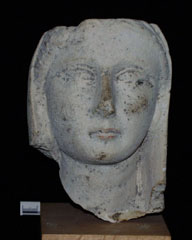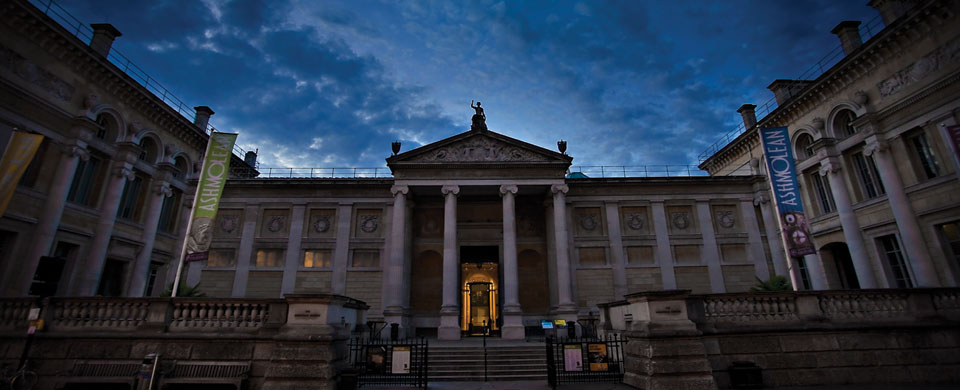| |
Ancient Cyprus: Donors and Collectors
associated with the Ashmolean's collections
from Ancient Cyprus |
| |
The Ashmolean collections from ancient Cyprus
contain material found or collected by many of the leading figures in
the long history of the archaeological exploration of the island. Several
institutions have also contributed to the collections. Some of the key
donors and collectors are listed below. |
| |
|
| |
- General Luigi Palma di Cesnola
- Cesnola held simultaneously the posts of both American and Russian
consul in Larnaka from 1865. He spent much of his time on the island
between 1865-1877exploring ancient sites on the island and amassing
a vast collection of antiquities. As Russian consul he took most of
his collection to London in 1872, although being forbidden to do so
as American consul. He sold some objects to museums and private collectors,
including General Pitt-Rivers (now in the Pitt Rivers Museum). The
bulk of the collection was sold to the Metropolitan Museum of Art,
New York. The Ashmolean did not acquire any material from Cesnola
directly, but has acquired objects formerly in his collection from
other sources, including gifts from John Ruskin
and C.E. Fortnum.
|
| |
|
| |
- Professor John Ruskin, Slade Professor of Art
at Oxford
- Supported Cesnola's 'researches' after visiting his exhibition of
Cypriot antiquities in London in 1872. Cesnola gave Ruskin a variety
of Cypriot antiquities, some of which he in turn gave to the Ashmolean.
Professor R.G. Collingwood, whose father
had been Ruskin’s secretary and biographer, donated other objects
from this collection to the museum at a later date.
|
| |
|
| |
- Cyprus Exploration Fund
- Organisation founded in 1887 to conduct properly documented and
scientific excavations on Cyprus in the interest of scholarship rather
than profit. It conducted several excavations on a variety of sites
during the 1880s-1890s, and some of the finds were donated to the
Ashmolean as one of the sponsors of the work. One of the original
leaders of the CEF fieldwork in Cyprus was D.G.
Hogarth, later Keeper of the Ashmolean Museum.
|
| |
|
| |
- Professor Sir John Linton Myres, Wykeham
Professor of Ancient History at Oxford (1910 -1939)
- Myres was the first person to research the history of Cyprus through
controlled excavations. His first excavation on Cyprus was for the
British Museum at Amathus in 1894, and some of this material is held
by the Ashmolean. Most of his work was undertaken for the Cyprus Exploration
Fund, and some material from these excavations was given to the Ashmolean.
Myres presented the first chronological structure for understanding
the history of the island in relation to the surrounding regions.
He also advised the British administration in drafting an Antiquities
Law, and in setting up a Department of Antiquities for Cyprus in 1935.
|
| |
|
| |
- J Arthur R Munro
- Munro was an archaeologist who worked in Cyprus, Montenegro, Albania
and Asia Minor during the late 19th century, including at Salamis
for the Cyprus Exploration Fund. His excavation diaries and site photographs
were donated to the Ashmolean, and have been archived and preserved
during the course of this project.
|
| |
|
| |
- Hector Catling
- Former Senior Assistant Keeper at the Ashmolean Museum (until-1971)
and former Director of the British School at Athens. Distinguished
scholar who conducted numerous excavations on Cyprus, and author of
Cypriot Bronzework in the Mycenaean World, among many other
works.
|
| |
|
| |
The first item from Cyprus to enter the Ashmolean's collections
was not an antiquity, but was a sample of asbestos stone (Lapis
asbestus Amianthus Cyprianus), which is recorded in a manuscript
catalogue of the 1770s. This specimen was probably transferred to
the University's "new" museum of Natural Sciences (now the
Oxford University Museum of Natural History) in 1860.
 The
first acquisition by the Museum of antiquities from Cyprus was in 1873,
when a collection of gold jewellery was purchased. Unfortunately no
findspot or collector is recorded for this material. The
first acquisition by the Museum of antiquities from Cyprus was in 1873,
when a collection of gold jewellery was purchased. Unfortunately no
findspot or collector is recorded for this material.
 The
first Cypriot antiquities from a known findspot entered the Museum's
collections the follow year (1874), when the Trustees of the Christy
Collection presented 13 objects as a bequest. These included 11 Hellenistic
statue heads from Dhali - but again were not associated with a specific
collector. The
first Cypriot antiquities from a known findspot entered the Museum's
collections the follow year (1874), when the Trustees of the Christy
Collection presented 13 objects as a bequest. These included 11 Hellenistic
statue heads from Dhali - but again were not associated with a specific
collector.
It is hoped that the documentation work completed during this project
will stimulate further research on the provenance and collections history
of unprovenanced material from Cypus in the Ashmolean collections and
thus enable objects to be attributed again to their exact place of origin.
|
| |
|



 The
first acquisition by the Museum of antiquities from Cyprus was in 1873,
when a collection of gold jewellery was purchased. Unfortunately no
findspot or collector is recorded for this material.
The
first acquisition by the Museum of antiquities from Cyprus was in 1873,
when a collection of gold jewellery was purchased. Unfortunately no
findspot or collector is recorded for this material. The
first Cypriot antiquities from a known findspot entered the Museum's
collections the follow year (1874), when the Trustees of the Christy
Collection presented 13 objects as a bequest. These included 11 Hellenistic
statue heads from Dhali - but again were not associated with a specific
collector.
The
first Cypriot antiquities from a known findspot entered the Museum's
collections the follow year (1874), when the Trustees of the Christy
Collection presented 13 objects as a bequest. These included 11 Hellenistic
statue heads from Dhali - but again were not associated with a specific
collector.